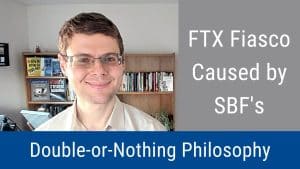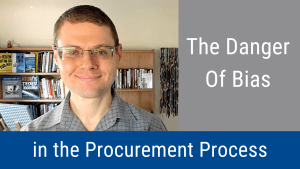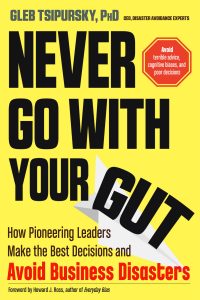The growth of remote work may be the pandemic’s silver lining, offering a solution to the tension between career and family for women, if companies provide adequate childcare benefits
To optimize hybrid work arrangements, use the Big Five personality test to measure team member personality and have those high in Conscientiousness, Introversion, Openness to Experience, and Emotional Stability spend more time working remotely
Prioritize communication & connection, choose suitable technology, understand challenges & benefits, embrace future hybrid & remote work.
Remote work is increasingly common in the marketing and advertising industry, with 75% of creative collaboration happening remotely.
Embrace automation and AI for exceptional customer service in hybrid work environments. Boost productivity, tailor experiences, and stay ahead in a changing landscape.
The top leadership should establish clear success metrics for an organization’s hybrid work model, which need to be measured quarterly to ensure the model is effective and meets the organization’s needs
In the hybrid work era, leaders must prioritize human connections, embrace empathy, and leverage neuroscience to redefine leadership for better performance and inclusive environments.
Experts agree that hybrid and remote work offer benefits like flexibility and work-life balance, but challenges include management change and social interaction. The future of work is predicted to be remote-centric.
Bosses resisting hybrid work due to biases like confirmation and status quo. Educating them on benefits can help remain competitive in changing job market.
To maximize hybrid work productivity, any office-based activities must outweigh the burden of commuting. Hybrid employees should work mostly from home, especially on focused individual tasks, asynchronous communication, and video meetings.
Hybrid and remote work options is a simple solution to quick quitting and employers who embrace this shift in work culture will be well-positioned to attract and retain top talent in today’s competitive job market
Remote workers can prevent burnout by creating their own “mental commute” to establish work-life boundaries and provide time for recovery and transition. Mental and physical breaks during the day can also improve well-being and decrease burnout.
Remote work innovation is fostered when companies establish techniques that support cross-functional connections, such as using collaboration software like Slack or Microsoft Teams to facilitate the exchange of new ideas.
Having a growth mindset can lead to greater success and fulfillment in life, and it’s possible to cultivate this mindset through deliberate effort and practice. By embracing challenges, persisting through obstacles, and learning from failures, individuals can develop their abilities and reach their full potential.
The benefits of remote work, including increased productivity, decreased overhead costs, and improved work-life balance, make it a trend that is likely to continue in the future, and that’s why remote career seekers should be optimistic
We overestimate the extent to which others agree with us. That creates a sense of a false alignment with them in our heads. Behavioral scientists call this tendency the false consensus effect.
Work from home jobs for disabled people enabled by COVID resulted in employment rates for those wit disabilities rising to the highest level in a decade, and companies need to provide such jobs to take advantage of a diverse talent pool.
As the efficacy of older vaccines gradually fades, leaders should promote the newly-updated booster shots. This will aid companies in reducing sick days, minimizing PR fiascos, and facilitating stakeholder capitalism. That’s the key take-away message of this episode of the Wise Decision Maker Show, which describes why business leaders need to promote the new booster shots.
For investors, the collapse of FTX is a reminder to be wary of founders like SBF with an excessive risk appetite. For entrepreneurs, it is a lesson to implement oversight and risk management plans to avoid the fate of SBF and FTX. That’s the key take-away message of this episode of the Wise Decision Maker Show, which describes how Sam Bankman-Fried’s double-or-nothing philosophy caused the collapse of FTX.
Remote and hybrid worker wellbeing is better than for in-office employees. Employers should establish clear expectations and communication policies to foster a healthy work-life balance and mitigate burnout.
By retraining managers to rely on data and best practices for hybrid and remote work, companies can address productivity paranoia and build trust between managers and employees.
In this episode of the Wise Decision Maker Show, Dr. Gleb Tsipursky speaks to Cesar Carvalho, CEO at Gympass, about why wellbeing is key to retention of hybrid and remote workers.
For investors, the collapse of FTX is a reminder to be wary of founders like SBF with an excessive risk appetite. For entrepreneurs, it is a lesson to implement oversight and risk management plans to avoid the fate of SBF and FTX.
In this episode of the Wise Decision Maker Show, Dr. Gleb Tsipursky speaks to Simon Dudley, Head of Analyst Relations at Logitech, about the importance of IT, Facilities, and HR playing well together to support hybrid and remote workers.
Any procurement process that is not protected from bias risks a bid protest. To protect the procurement process, officials need to learn about and address common cognitive biases in procurement decision-making. That’s the key take-away message of this episode of the Wise Decision Maker Show, which describes the danger of bias in the procurement process.
Protect yourself from decision disasters by getting our free Wise Decision Maker Course, which includes 8 weekly video-based modules. As a bonus, you'll receive a free copy of our Assessment on Dangerous Judgment Errors in the Workplace when you sign up.
































